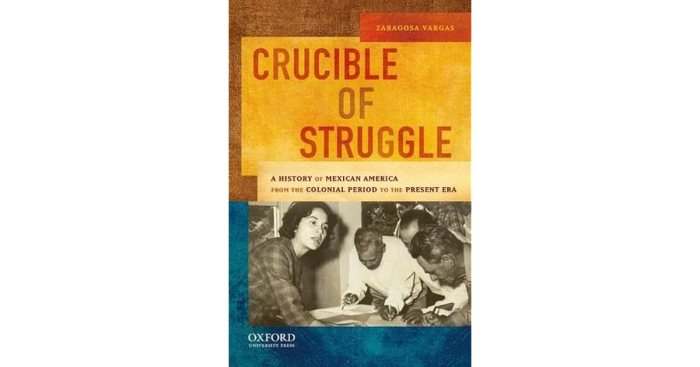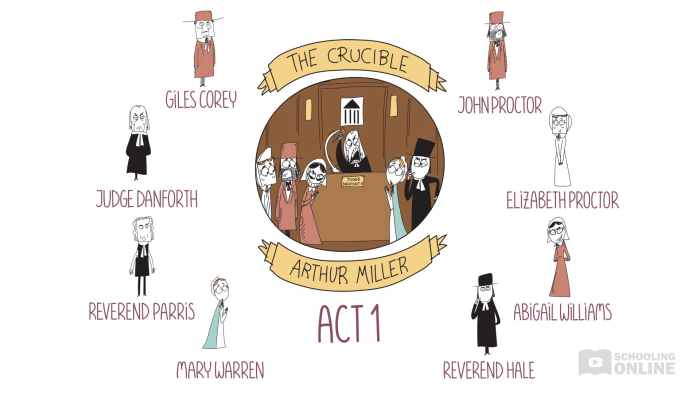Crucible of Struggle Chapter 1 Summary introduces readers to a meticulously crafted historical narrative, establishing the foundation for a captivating tale that unfolds within a richly detailed and thought-provoking setting.
This chapter meticulously introduces the novel’s central characters, providing insights into their backgrounds, motivations, and the intricate relationships that bind them together. The evocative depiction of the crucible setting, a place steeped in both historical significance and metaphorical resonance, sets the stage for the exploration of complex themes and the unfolding of a gripping plot.
Setting and Characters: Crucible Of Struggle Chapter 1 Summary

Historical Context and Time Period
Arthur Miller’s “The Crucible” is set in Salem, Massachusetts, in 1692, during the infamous Salem witch trials. This period of mass hysteria and persecution was characterized by fear, superstition, and a breakdown of social order.
Main Characters
- John Proctor: A respected farmer and former town official who becomes a vocal critic of the witch trials.
- Abigail Williams: A young, orphaned girl who accuses several women of witchcraft, including Proctor’s wife.
- Elizabeth Proctor: John’s wife, a strong and pious woman who is accused of witchcraft.
- Reverend Samuel Parris: The minister of Salem who is determined to root out witchcraft in his community.
- Judge Danforth: A respected magistrate who presides over the witch trials and is determined to maintain order.
The Crucible Setting
The play’s setting, the crucible, is a metaphor for the intense and purifying fire of persecution. It represents the community’s desire to rid itself of evil and its willingness to sacrifice innocent lives in the process.
Conflict and Tension

Central Conflict
The central conflict of “The Crucible” is the clash between justice and fear. The witch trials are driven by fear and superstition, leading to the unjust accusation and execution of innocent people.
Interpersonal Conflicts, Crucible of struggle chapter 1 summary
- John Proctor vs. Abigail Williams: Proctor suspects Abigail of falsely accusing his wife of witchcraft, leading to a tense confrontation.
- Reverend Parris vs. John Proctor: Parris’s desire for power and control clashes with Proctor’s skepticism and independence.
- Elizabeth Proctor vs. Abigail Williams: Elizabeth becomes jealous of Abigail’s attention to John, leading to a bitter rivalry.
Setting and Tension
The setting of Salem during the witch trials creates an atmosphere of fear and tension. The community’s isolation and lack of outside information contribute to the spread of rumors and suspicions.
Themes and Symbolism

Major Themes
- Justice: The play explores the dangers of mob mentality and the importance of due process.
- Guilt: Characters grapple with the guilt of their actions and the consequences of their choices.
- Redemption: The play raises questions about the possibility of redemption and forgiveness.
Symbolism
- The Crucible: Represents the community’s desire to purge itself of evil, even at the cost of innocent lives.
- Abigail’s Bird: Symbolizes the destructive power of lies and accusations.
- The Forest: Represents the wilderness beyond the boundaries of society, where danger and temptation lurk.
Expert Answers
What is the significance of the crucible setting in Chapter 1?
The crucible setting in Chapter 1 serves as a powerful metaphor for the societal and personal struggles that unfold throughout the novel. It evokes a sense of intense heat and pressure, reflecting the challenges and conflicts that the characters face.
How does the chapter establish the central conflict of the novel?
Chapter 1 introduces the underlying tensions and conflicts that drive the plot. It sets up the clash between personal beliefs and societal expectations, foreshadowing the moral dilemmas and ethical struggles that the characters will encounter.
What are the main themes explored in Chapter 1?
Chapter 1 introduces several key themes that will be developed throughout the novel. These include the themes of justice, guilt, redemption, and the struggle between good and evil.
